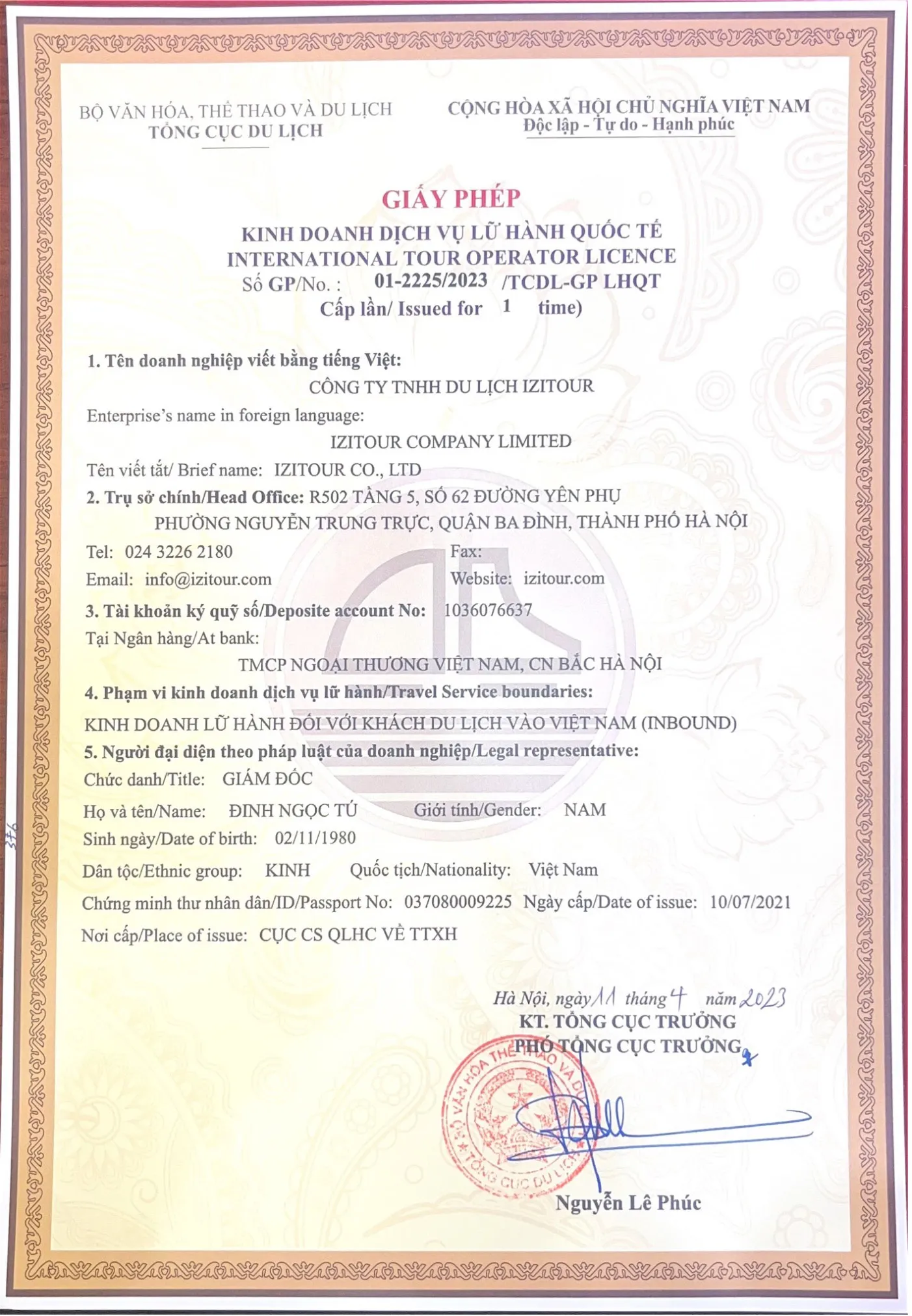You might not know it, but in Cambodia, a simple hand gesture can tell the story of an entire civilisation. Born in the shadow of the Angkor temples, the Apsara dance is more than just a performance, it’s a living fragment of the Khmer soul. With its slow movements, graceful gazes, and regal costumes, it invites travellers to discover Cambodia from a more spiritual and poetic angle.
1. The origin of Apsara Dance
The Apsara dance traces its origins back to the 7th century, as evidenced by the bas-reliefs carved into the walls of the Angkor Wat temple. Inspired by Hinduism, which was highly influential in Southeast Asia at the time, the dance portrays the Apsaras, who are celestial nymphs married to the divine musicians, the Gandharvas, tasked with dancing and singing for the gods. In mythology, they are also attendants to the god Indra, the sovereign of the heavens.
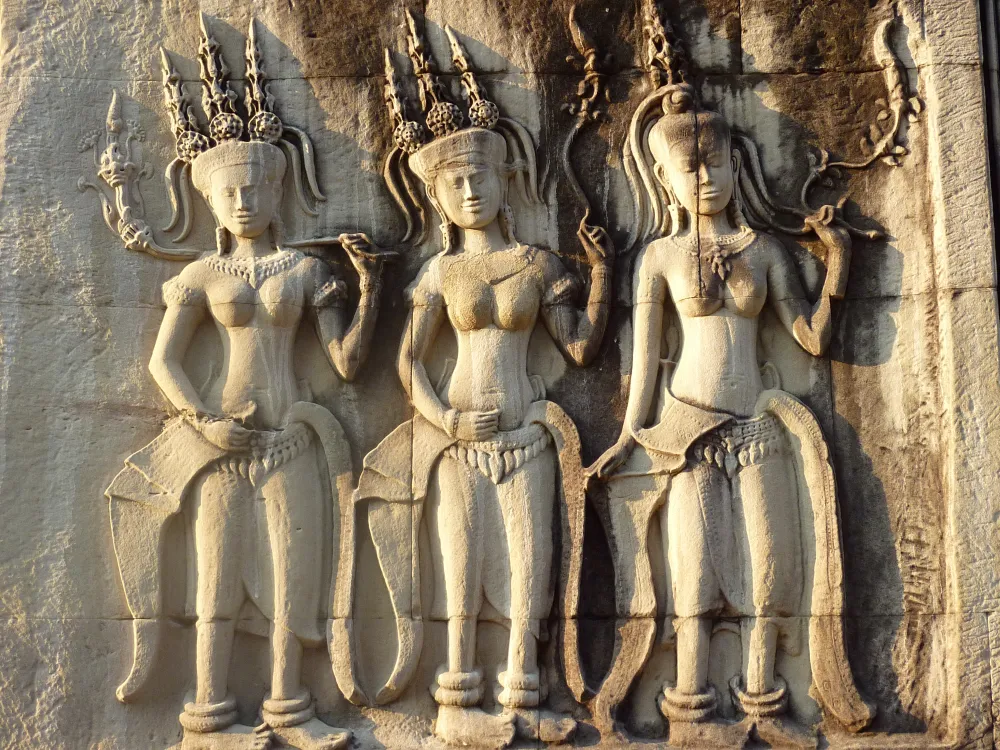
Integrated into Khmer culture, this dance became a sacred expression of Cambodian royal art. The dancers, adorned with golden costumes, glittering jewellery, and traditional crowns, literally embody the divine figures etched into the stone of the Angkor temples. Here, dance does not just serve to entertain - it is a spiritual language, a living homage to the beliefs and values of the Khmer people.
2. The historical evolution of the Apsara Dance
From the Angkorian era (9th - 15th century) up to the French Protectorate period (1863 - 1953), the Apsara dance was passed down and preserved, even if it experienced a certain decline after the Angkorian golden age (16th - 19th century).
However, during the Khmer Rouge regime - one of the darkest periods in Cambodia's cultural history - the arts were violently repressed. Many artists, including Apsara dancers, were persecuted or executed, and the cultural heritage, including this sacred dance, risked disappearing forever. Yet, a few surviving dancers and masters managed to preserve their art, and after the regime's fall, they played a crucial role in the renaissance of Apsara dance, transmitting it to a new generation.
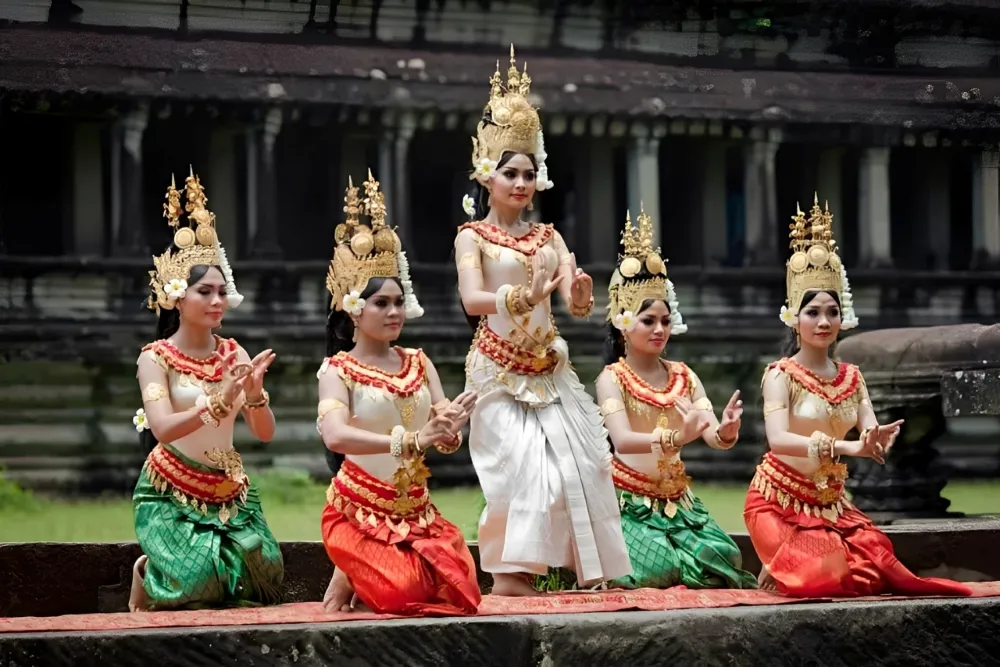
In the 20th century, spurred by Queen Sisowath Kossamak, mother of King Norodom Sihanouk, the Apsara dance experienced a true revival. Supported by the royal court, new generations of dancers were trained, allowing this ancestral art to survive and shine internationally. Today, the Apsara dance is inscribed in Cambodia's cultural heritage and is one of the must-do cultural experiences during a trip to Siem Reap or Phnom Penh.
3. The sacred aesthetics and grace of Apsara Dance
In contrast to many traditional dances worldwide, the Apsara dance is distinguished by the deliberate slowness of its movements - a slowness that is never inertia but a controlled grace. Every gesture must be executed with an almost sacred precision to reveal the dancer's complete delicacy and the singular elegance of this ancestral Khmer art.
The language of hands - The sacred mudras
The hands, true instruments of narration, play a central role. In the Apsara dance, every finger position, every curve of the wrist is a symbol. For examples, an opening hand evokes a flower offered to the deities, a downward gesture recalls the blessing of nourishing rain, while an arm raised to the sky murmurs a vow of prosperity.
It is said that there are nearly 1,500 different mudras, each carrying a precise name and meaning. A barely curved finger joint might signify "today", an arm delicately placed at heart level expresses "happiness", a hand turned downwards symbolises "life", while another raised points towards "death." These gestures are never isolated: they flow into one another like a sequence of whispered prayers, demanding an almost unreal mastery of the body from the dancers.
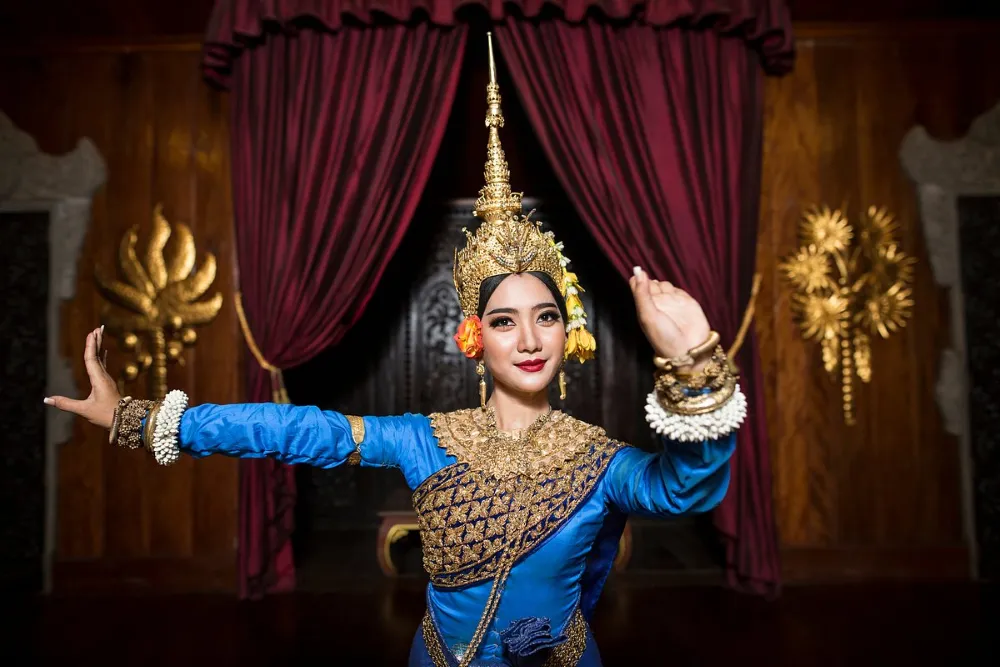
The outstretched hand keeps bad things away. The raised hand welcomes good luck from the gods
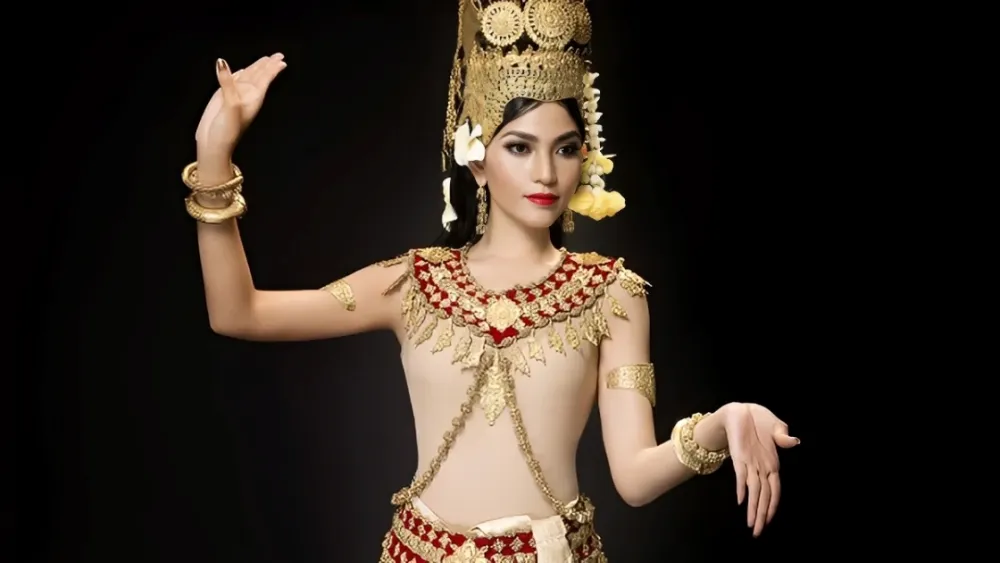
The hand movements mean a gift from heaven and a blessing coming down
Posture and expression - The balance of strength and softness
The dancer maintains a perfectly straight posture, the body balanced, yet every movement remains imbued with suppleness. The feet and knees bend delicately, creating that characteristic fluidity of steps, where grace and flexibility seem to become one. But beyond the posture, it is the facial expression that completes the enchantment: a lowered gaze, an imperceptible smile - that noble restraint reminiscent of the figures sculpted on the walls of Angkor. The face does not act; it embodies divine serenity, in perfect harmony with the slow breathing of the gestures.
Costumes and adornments – The Khmer royal legacy
Apsara dancers wear a traditional costume consisting of a long draped skirt, a fitted bodice, and a cascade of shimmering jewellery - necklaces, bracelets, and earrings. Entirely crafted from fine silk embroidered with delicate motifs, these outfits combine lightness and nobility, allowing the dancer to move with fluidity while maintaining a majestic allure.
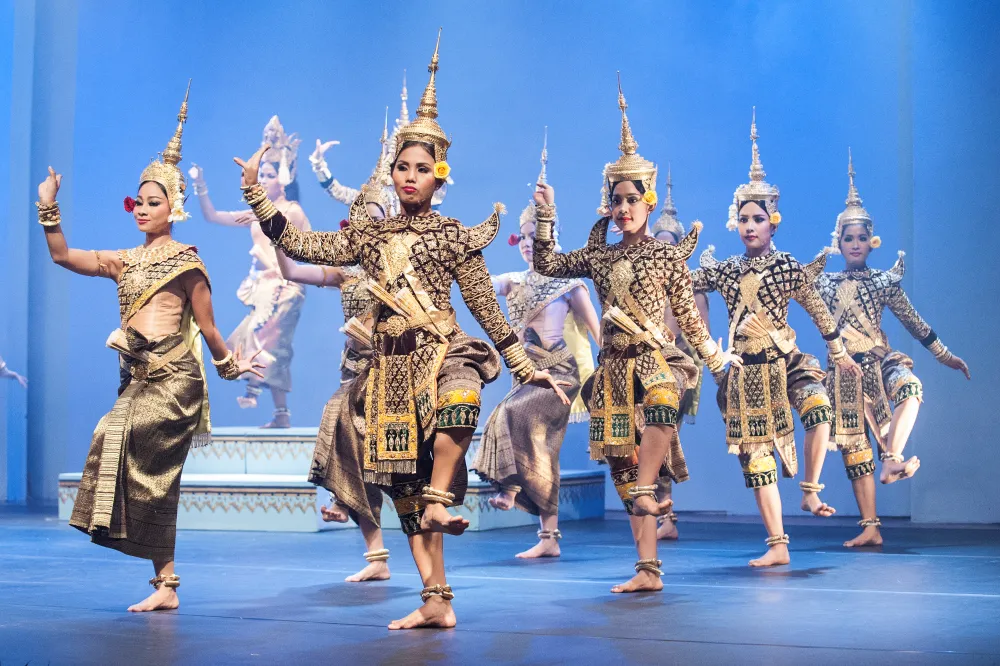
But it is the crown, or mokot, that immediately draws the eye. Fashioned from gold or silver, set with stones and floral ornaments, it symbolises divine grace and royal dignity. Directly inspired by the bas-reliefs of Angkor, it transforms the dancer into a true celestial nymph, a sacred figure of the Khmer pantheon.
The adornments, for their part, play an essential role in the dance's aesthetics. Golden chains, tinkling anklets, layered necklaces, and finely chiselled armbands accentuate every movement, catching the light with each gesture. Made of gold, silver, or semi-precious stones, these ornaments are not mere decorations: they extend the choreography, revealing the royal and spiritual dimension of this millennial art.
An exacting discipline – Up to 15 years of training
In this sacred art, grace is only possible at the cost of absolute rigour. Dancers must develop leg strength to execute complex postures while cultivating extreme suppleness in their wrists and fingers, capable of bending at such delicate angles that one might believe their limbs have no joints.
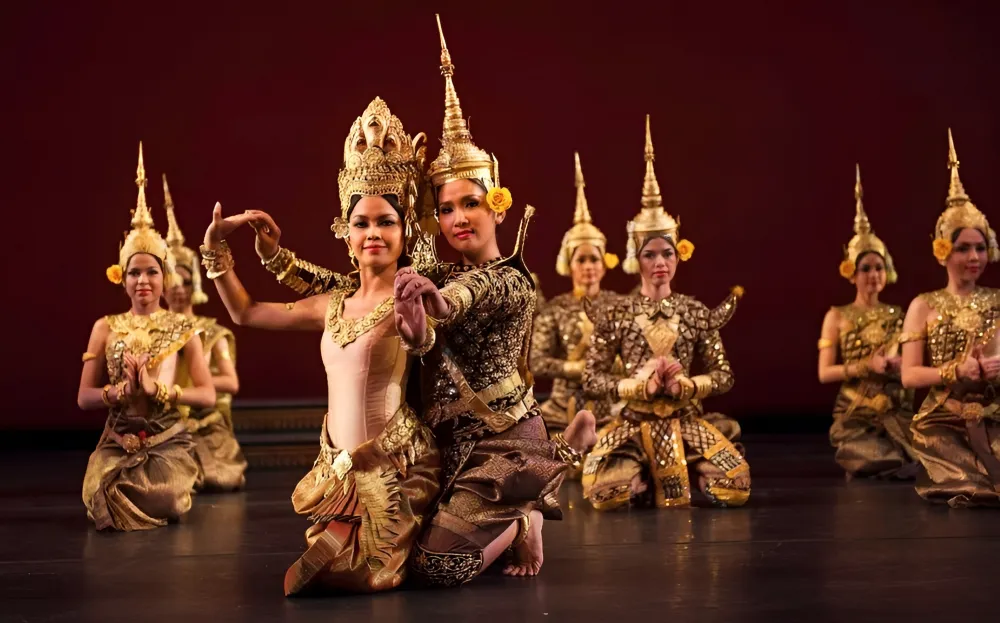
Training often begins before the age of ten and can extend over more than fifteen years, under the supervision of master dancers. Bodies are shaped slowly, with patience: neither too strong nor too heavy, but perfectly balanced, flexible, and enduring. Consistency, discipline, and an almost meditative patience are essential, as every movement is an act of devotion as much as an artistic gesture.
Sacred music – The invisible breath of Apsara Dance
If the dancers are the face of Apsara, the Pinpeat musicians are its beating heart. Their role is not to accompany, but to dialogue with the dance. For every drum beat, a step responds. For every flute note, a wrist curves. A hand gesture - a musical accent: it is a silent conversation between the dancer's grace and the instruments' breath. Thus, the music does not follow the dance - it gives it life.
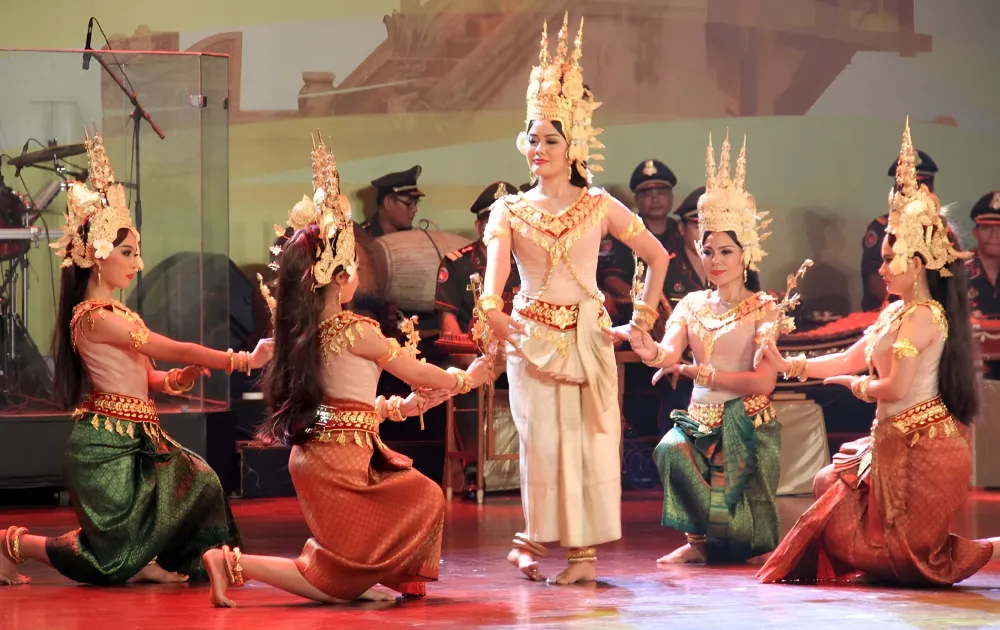
4. The significance of Khmer Apsara Dance
Apsara – Symbol of Khmer femininity
More than a mythological figure, the Apsara embodies the feminine ideal in Cambodian culture. Her straight posture evokes dignity, while the softness of her gestures conveys the grace and inner strength of Khmer women. Her discreet, almost still smile is not just aesthetic—it symbolises patience, wisdom, and resilience, qualities deeply valued in Cambodian society.
A prayer in motion
The Apsara dance goes beyond the scope of a show: it is perceived as a living offering, a sacred link between the human world and that of the divinities. In every fluid movement, one reads a silent language, an invocation to the forces of nature—beneficial rain, the fertility of the land, the blessing of the gods. To watch an Apsara performance is to attend a poetic ceremony, where art becomes ritual and every gesture is imbued with a spiritual dimension.
Symbol of identity and national pride
But beyond its sacred dimension, the Apsara dance also embodies the soul of the Khmer people. Inspired by the majestic bas-reliefs of Angkor Wat, these dancing figures have become the artistic face of an eternal, refined, and resilient Cambodia. Through them, the country affirms its memory, beauty, and cultural pride, even after the darkest periods of its history. In 2003, the Apsara dance was officially recognised by UNESCO as part of the Intangible Cultural Heritage of Humanity of Cambodia.
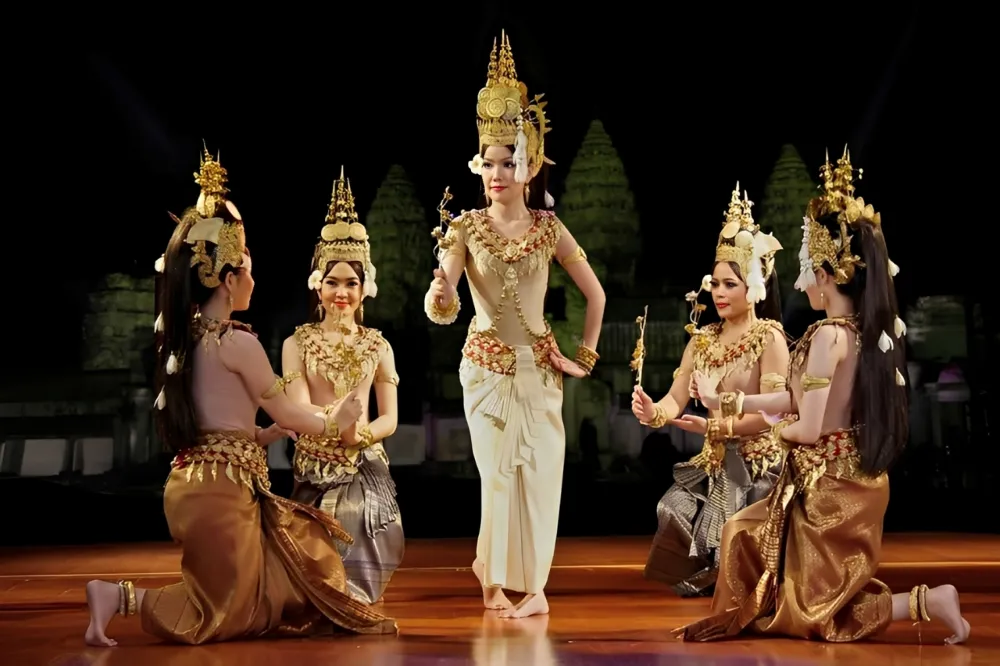
5. Where to see the Apsara Dance in Cambodia?
Siem Reap
Today, the Apsara dance is no longer reserved only for royal ceremonies. It is being reborn through cultural shows accessible to travellers. Siem Reap is the most popular place to attend an Apsara show. Many hotels and theatres offer traditional dinner shows, where you can savour Khmer cuisine while admiring the dancers. Among the most popular venues:
- Apsara Theatre – Classic performance in a setting inspired by Angkor.
- Angkor Village Resort – Refined atmosphere, ideal for a cultural evening.
- Temples Lounge or Koulen Restaurant – Accessible and friendly experience with a buffet and live dance.
Phnom Penh
In the capital, the Apsara dance is sometimes presented within the Royal Palace or the Royal Ballet Theatre, where the art was restored in the 20th century. Attending a show here is seeing the Apsara in its original setting, with all its royal dimension.
Special events and festivals
During major celebrations like the Water Festival (Bon Om Touk) or the Khmer New Year, free outdoor performances are offered. These moments allow you to experience Apsara art at the heart of local life, surrounded by Cambodian families.
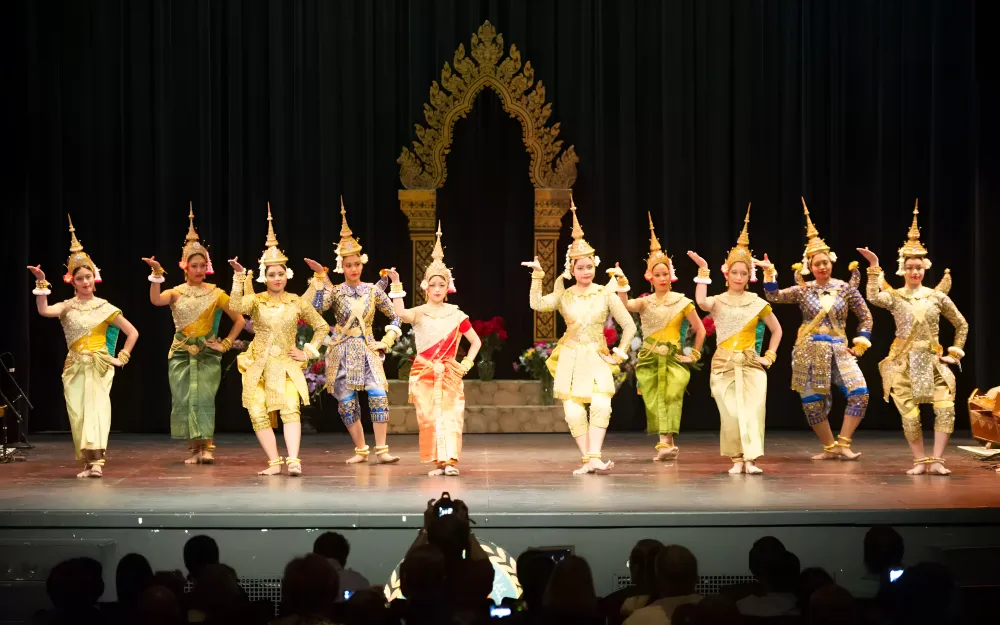
Attending an Khmer Apsara dance is not just admiring a show, it's plunging into the soul of Cambodia, where art, spirituality, and the memory of the Angkor kingdom meet. Whether in a refined theatre in Siem Reap or during an open-air festival, taking the time to see an Apsara performance is giving your trip a poetic and timeless dimension.
If you are planning a trip to Cambodia, do not leave the country without experiencing this suspended moment, where the dance becomes prayer and every gesture seems to whisper the history of a people.
See more:
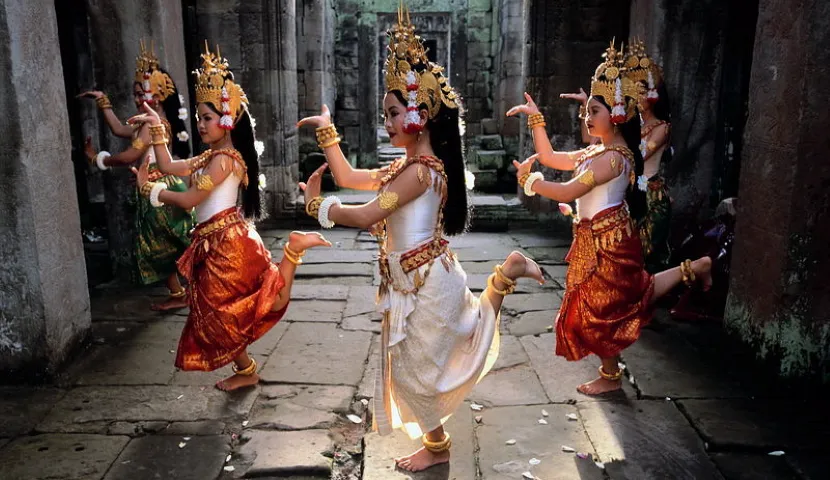






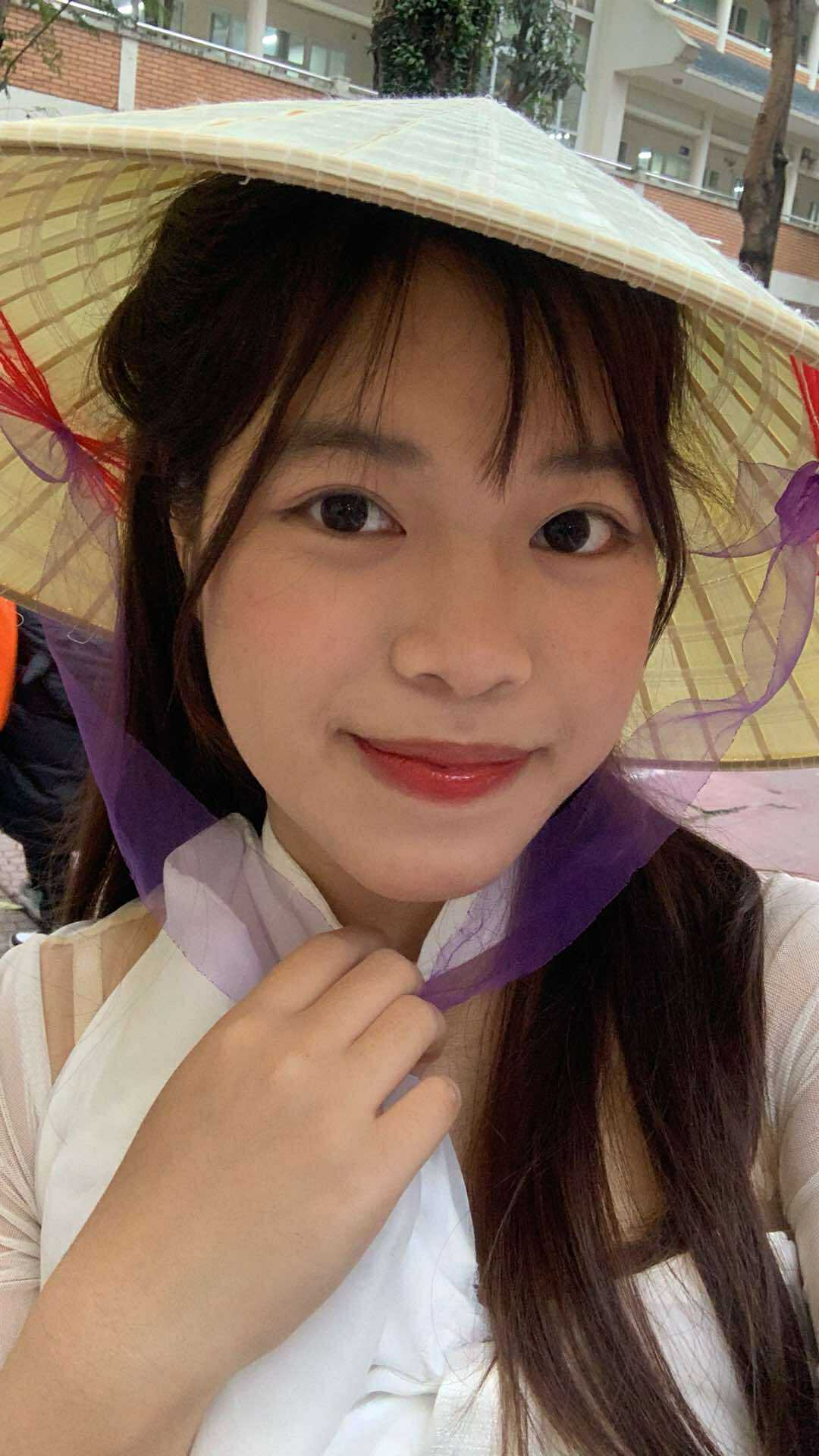


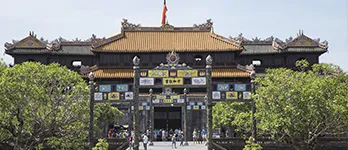


 TRAVELERS' CHOICE 2025
TRAVELERS' CHOICE 2025 